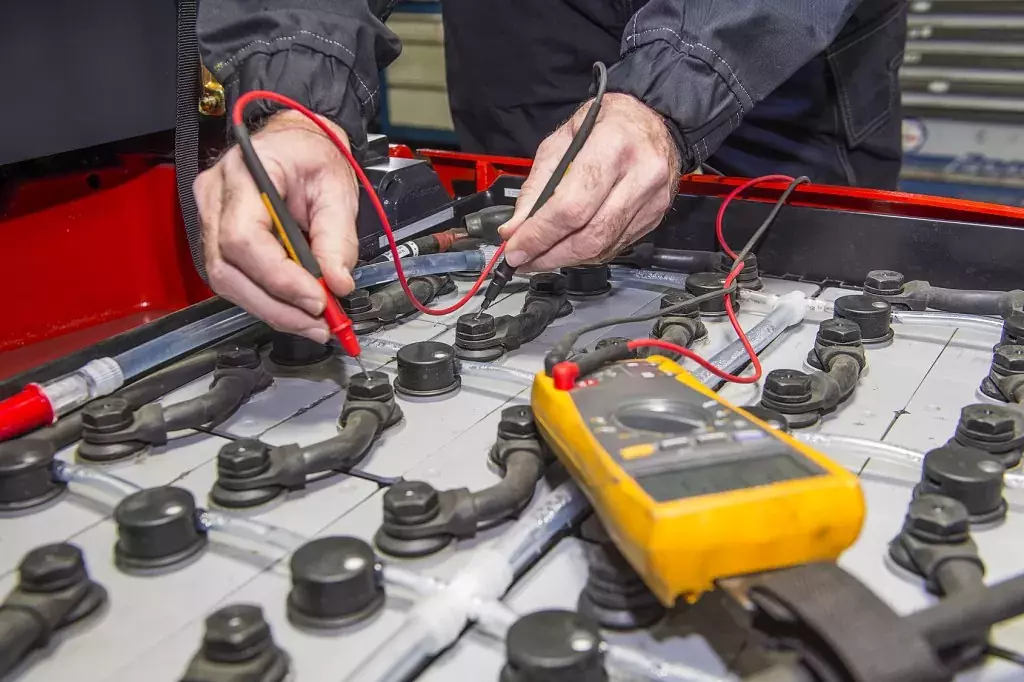 Like most machinery that’s put to use on a daily basis, forklifts are susceptible to endure general wear and tear, in many instances some of these aging processes require routine or unique repairs. Maintaining a forklift can be done so with ease. Adhering to a strict preventative maintenance schedule is proven to offset and delay some of the conditions that accompany the general aging process seen in heavily used forklifts. There are many practices one can undertake to maximize the effect of any repair and keep their forklift in peak physical condition. Here are six tips for repairing your forklift:
Like most machinery that’s put to use on a daily basis, forklifts are susceptible to endure general wear and tear, in many instances some of these aging processes require routine or unique repairs. Maintaining a forklift can be done so with ease. Adhering to a strict preventative maintenance schedule is proven to offset and delay some of the conditions that accompany the general aging process seen in heavily used forklifts. There are many practices one can undertake to maximize the effect of any repair and keep their forklift in peak physical condition. Here are six tips for repairing your forklift:
1) Change That Oil! – According to Forklift Training.Info, oil changes must be done religiously every three months. Being consistent in this practice is sure to expand longevity of both the engine and enhance fuel economy.
2) Always Adhere to Manufacturer’s Instructions – When forklifts are designed, they are constructed to specific parameters and guidelines set forth by manufacturing engineers equipped with the knowledge of all featured and working parts. In material handling applications, safety comes first. Failing to comply with manufacturer instructions when repairing a forklift can foster disastrous consequences. The best way to repair a forklift is to make sure you follow manufacturer instructions, failing to do so can result in damaging one or many of the different parts and ultimately intensify any problems.
3) Be Vigilant with Brakes – Brake pads grind and wear, it is as cyclical as the seasons themselves. One of the most proactive maneuvers any owner or operator can take is to prevent brake failure. This commitment begins with routinely inspecting the pads, lines and calipers. In the event a defect is detected, the repair should be executed immediately. Failing to do so can ultimately result in adversely affecting the rotors of the forklift, which can cause even more severe damage to the braking system, turning a small and minor repair into a major overhaul.
4) Repair Gauges Promptly – The assortment of gauges and indicators on the instrument panel of the forklift are a key part to making sure any forklift is working properly. These mechanisms activate when a part or component is malfunctioning. Therefore, before assessing any further need for repairs or amendments, it is important to ensure these devices are working properly, calibrated appropriately and given proper due attention.
5) Address Indication of Malfunctions – Going along with number four, it is imperative for any forklift operator or owner to be mindful of any malfunction being indicated. When the instruments deliver a warning, it is necessary that the appropriate measures are taken swiftly, as these usually indicate any faults. Taking the initiative will prevent more expensive repairs later. In the event of a repair, the revelation is often early enough for intervention to be less than painstaking and more a less a cost-effective endeavor.
6) Don’t Be Shy To Recycle or Re-Use Parts To Limit Overhead – A great method to handle any repair or keep any forklift functioning properly is by acquiring recycled parts. This strategy is both friendly to your wallet and to the environment. It is not a rarity for forklift parts to be refurbished, revamped and installed. Recycling parts have been proven to save businesses money. Recycled parts do not lack quality, they are in fact augmented to the appropriate specification to ensure optimal readiness.
